(The following is based in large part on a dissertation of the Nesivos Shalom, contained in the Bamidbar volume, p. 207.)
What happens when the ninth of Av – usually observed as a day of fasting and intense mourning for the Churban (Destruction [of Yerushalayim and the Beis Hamikdash]) – occurs on Shabbos? This is actually more than just a question of pragmatics; as we shall see, the issue is actually most revealing of the overall nature of mourning for the Churban.
The Positions
So, what does indeed happen when the two entities of Shabbos and Tisha B’Av coincide? The issue, of course, is that fasting and mourning – the hallmarks of Tisha B’Av – are forbidden notions on Shabbos. What, then, becomes of Tisha B’Av? The Gemara records a landmark debate that centers around this very question:
רֶבִּי… בִּקֵשׁ לַעֲקוֹר… תִּשְׁעָה בְּאָב שֶׁחָל לִהְיוֹת בַּשַּׁבָּת… אָמַר רֶבִּי הוֹאִיל וְנִדְחֶה יִדָחֶה, וְלֹא הוֹדוּ חֲכָמִים – “Rebbi sought to abolish Tisha B’Av when it falls out on Shabbos… Rebbi said: Since it is postponed (by Shabbos), let it be suspended entirely. The Sages did not agree” (Megillah 5b).
In practice, the halachah, of course, follows the opinion of the Sages (cf. Shulchan Aruch, Orach Chayim 552:10). And so, when Tisha B’Av does fall out on Shabbos – and this fast is not observed on the actual date of the ninth of Av – it is postponed until after Shabbos and observed on the 10th. It is worthwhile, however, to gain an understanding of Rebbi’s approach. At first glance, it almost seems that, in his opinion, when this occurs there is simply no Tisha B’Av that year; we don’t observe the fast or the mourning on the ninth itself (as it is Shabbos), and Rebbi stated regarding the next day: “Ho’il v’nidcheh, yidacheh – Since it has been postponed, let it be suspended entirely.”
But as the Nesivos Shalom proceeds to demonstrate, the matter may not be so simple after all. We may view the issue quite differently with a clearer understanding of the whole notion of aveilus (mourning) for the Churban. That this exercise is so paramount in the life of a Jew should be most apparent to all, as indicated by the familiar verse: אִם־אֶשְׁכָּחֵךְ יְרוּשָׁלָם תִּשְׁכַּח יְמִינִי, תִּדְבַּק־לְשׁוֹנִי לְחִכִּי אִם־לֹא אֶזְכְּרֵכִי אִם־לֹא אַעֲלֶה אֶת־יְרוּשָׁלַם עַל רֹאשׁ שִֹמְחָתִי – “If I forget you, Yerushalayim, my right hand should forget (its ability); my tongue should cleave to my palate if I do not remember you, if I do not elevate Yerushalayim to the forefront of my rejoicing” (Tehillim 137:5,6). The issue that warrants further examination, however, is what exactly such aveilus entails.
Looking Back and Ahead
The Nesivos Shalom explains that aveilus for the Churban consists primarily of two components. The first relates simply to the overwhelming loss Klal Yisrael suffered as a result. We look back upon the spiritual grandeur that was manifest at the time the Beis Hamikdash stood and the myriad opportunities it presented for attaining closeness with Hashem. Thus, we mourn how all of this has been lost to us and how we are faced with profound decline instead of spiritual elevation.
But then there is another component, one characterized more by a focus on the future. That is, as we consider our status as exiles, we yearn for the day when the Beis Hamikdash will be restored, and we will once again attain supreme closeness with Hashem. This, in fact, is a recurring theme in our daily prayers, as reflected by such supplications as “V’li’Yerushalayim ircha b’rachamim tashuv – And to Yerushalayim, Your city, may You return with mercy.” And, of course, there is the daily prayer that appears in the Mishnah (Avos 5:20):
יְהִי רָצוֹן מִלְּפָנֶֽיךָ ה’ אֶלֹקֵינוּ שֶׁתִּבְנֶה עִירְךָ בִּמְהֵרָה בְיָמֵֽינוּ.
“May it be Your will, Hashem our G-d, to rebuild the Beis Hamikdash speedily in our days.”
Both of these sentiments – sorrow for the past, and yearning for the future restoration – are, of course, essential components of the endeavor of aveilus for the Churban. The question that arises, however, is: which is paramount? The Nesivos Shalom understands that this is the central question upon which hinges the disagreement between Rebbi and the Sages regarding Tisha B’Av that falls out on Shabbos.
Rebbi was of the opinion that while both are important, it is the yearning for the restoration that is the primary aspect of aveilus for the Churban. Furthermore, the form of aveilus that is proscribed on Shabbos is only the sorrowful recollections of what was lost; but the hope and pining for the future does not conflict with the Shabbos atmosphere. On the contrary; Shabbos is likewise a day of yearning for closeness with Hashem, as indicated by the Shabbos hymn: צָמְאָה נַפְשִׁי לֵאלֹקִים לְקֵל חָי לִבִּי וּבְשָֹרִי יְרַנְּנוּ אֶל־קֵל חָי –“My soul thirsts for G-d, for the Living G-d; my heart and flesh sing to the Living G-d.” This is why Rebbi held that in the incidence of a Shabbos Tisha B’Av, no fasting is observed on the following day. It is not that he feels that on such a year the whole observance of Tisha B’Av is simply “deleted”; rather, its primary component is indeed fulfilled — through yearning and craving for the Beis Hamikdash – even on Shabbos. Thus, as the main aspect of the aveilus was addressed, Rebbi saw no need to institute a special fast on the morrow just for the (comparatively) minor aspect of feeling sorrow for the Churban.
For their part, the Sages held that the aspect of sorrow for the past cannot be dispensed with; for this likewise contains an element of futuristic yearnings. After all, the purpose of recalling the lost grandeur of the Beis Hamikdash is not simply to wallow in misery; such an exercise would only be counterproductive in terms of service of Hashem. Rather, maintaining a focus on the possibilities of closeness with Hashem that the Beis Hamikdash provided will itself spark a deep longing for its restoration. As such, they felt that even in such a year when Tisha B’Av falls on Shabbos, the component of “looking back” should not be neglected; hence, the fast and intense mourning practices were instituted for the following day. This was done with the full knowledge that these are inherently essential and constructive facets of aveilus, in accordance with Chazal’s teaching: כֹּל הַמִתְאַבֵּל עַל יְרוּשָׁלַֽיִם זוֹכֶה וְרוֹאֶה בְּשִׂמְחָתָהּ – “Whoever mourns for Yerushalayim will merit (in the future) to behold its rejoicing” (Ta’anis 30b).







